
 |
|
CSS Play Menu by Css3Menu.com |
|
CSS Play Menu by Css3Menu.com |
|
CSS Play Menu by Css3Menu.com |
| Camera and Video Quality: |
|
The Samsung Galaxy S III offers the same camera resolution but actually improves on the performance. It can capture stills of up to 3264 x 2448 pixels and 1.9 MP ones with the front-facing cam. The latest Galaxy offers geotagging, touch focus, face and smile detection and digital image stabilization. Due to the fast quad-core processor it is also able to simultaneously record HD (1080p or 720p) video and take near full-resolution pictures (those are cropped to an aspect ratio of 16:9 to match that of the videos and what is shown in the viewfinder). The camera interface is quite similar to what the Galaxy S II has. You get two shortcut bars on each side of the viewfinder - on the right you get the still camera / camcorder switch, a virtual shutter key and the gallery shortcut (which is a thumbnail of the last photo taken). On the left you get several controls and the good news is that you can pick any four shortcuts to put there - you can easily have all frequently used features just a tap away. The fifth shortcut always points to Settings. |
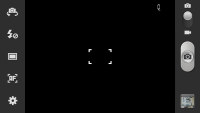 |
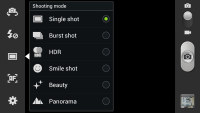 |
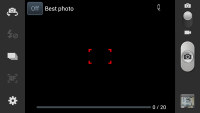 |
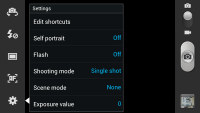 |
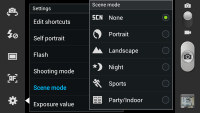 |
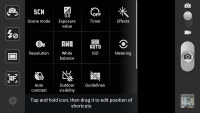 |
|
The Galaxy S III's camera has an F/2.6 aperture as opposed to the F/2.65 of its predecessor and focal length of 3.7 mm compared to the 3.97 mm of the Galaxy S II. This results in slightly wider field of view on the Galaxy S III. We've prepared a quick comparison between the two below. The Galaxy S III indeed offers slightly higher resolution and better contrast. The color rendering has changed and the S III gives a boost to greens, which throws things off a bit. Samsung were bragging left and right about the zero shutter lag of the Galaxy S III and we are happy to report that the smartphone is able to deliver. Pictures are snapped extremely fast and there's even a burst mode available where you hold the virtual on-screen shutter and the phone will make 20 consecutive shots in just 6 seconds or so. The good thing is that the images, produced in burst mode are in full 8 MP resolution. We were told that the S III is actually capable of capturing full res shots at 3.3fps for much longer than that, but the 20 shot limit was set to prevent users from filling their storage with hundreds of identical shots. There's an option called Best photo available in Burst shot mode - it snaps 8 photos in a row and lets the phone automatically pick the best one (where people are smiling and aren't blinking). There's also HDR mode for high-contrast scenes. Photos from the Samsung I9300 Galaxy S III are sharp and with very low levels of noise and plenty of detail. Color reproduction is okay, though greens seem slightly more saturated than reds and blues. The dynamic range is very good, too adding up to what is certainly one of the best 8MP shooters around. |
 |
 |
 |
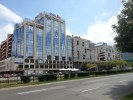 |
 |
Video recording is top notchThe Samsung Galaxy S III is able to record FullHD 1080p and HD 720p video hassle-free. During recording you can also snap full-res 16:9 stills. The camcorder interface is almost the same as the still camera's - you get the same customizable panel on the left for up to five shortcuts. The 1080p videos are impressively smooth, noise-free and with plenty of detail and good colors. The video container used is mp4 and it creates clips with a bitrate of about 17-18Mbps, which is enough to encode the video with no traces of compression. The framerate stays pretty solid at 30fps. The same goes for the 720p videos, which have an average bitrate of 12Mpbs. Unlike the S II, the Galaxy S III camera has the same field of view whether you're recording 1080p or 720p videos. Both 1080p and 720p videos are recorded with stereo sound using the AAC codec with a bitrate of 134Kbps and sampling rate of 48kHz. |
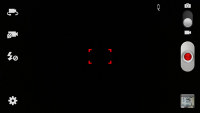 |
 |
 |
 |
| PRIVIOUS PAGE | NEXT PAGE |